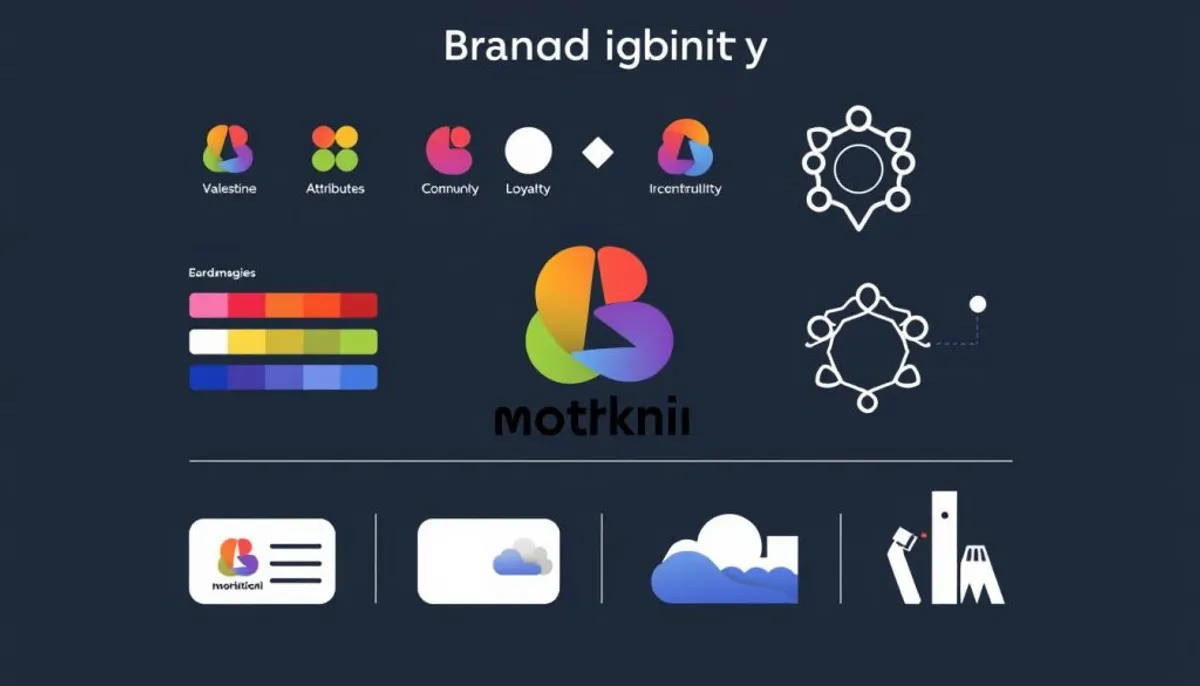Brand culture is a pillar of the current marketing strategy. It encompasses the identity, DNA, and values of the company. This guide reveals the heart of this concept and its influence on consumer perception.
In a saturated market, a robust brand culture can be decisive. It establishes a more intimate relationship with customers. This relationship transcends the external image, revealing the authenticity of the company.

Data reveals the increasing importance of corporate culture. 88% of young professionals value alignment with their employer's culture. This data highlights the vital role of brand culture in attracting and retaining talent.
Brand culture extends to several fields, such as food service, textiles, and technology. Brand managers, often specialized in Digital Communication & Brand Strategy, are responsible for its development and sustainability.
Brand culture definition: the fundamentals
Brand culture is a fundamental concept in today's business world. It encompasses the identity, values, and personality of a company. Understanding its fundamentals is crucial for any effective brand strategy.
The evolution of the brand concept
The evolution of brands has undergone a significant transformation over time. From seals of ancient China to modern logos, brands have evolved to become much more than just a visual identity. Today, they represent a promise and expectations for consumers.
The importance of authenticity in brand culture
Brand authenticity has become a key element. According to a study by CoreNet Global, 77% of real estate executives consider brand to be an essential driver for their business. However, only 15% believe their facilities perfectly reflect their brand. This disparity underscores the importance of authenticity in building a strong brand culture.
The strategic role of brand culture
Brand culture plays a crucial role in the brand strategy. It differentiates the company from its competitors and creates an emotional connection with consumers. Giants like Amazon and Starbucks illustrate how a strong brand culture can influence the customer experience. Amazon focuses on user experience and technology, while Starbucks invests in the ambiance of its stores to enhance its brand perception.
Ultimately, brand culture goes beyond the logo or advertising. It embodies the identity of the company, its values, and its promise to customers, thus playing an essential strategic role in the long-term success of the company.
The essential components of a strong brand culture
A strong brand culture relies on several key elements. These components shape a company's identity. They create a coherent image and establish a lasting connection with customers.
Company vision and mission
The company mission defines its reason for being and long-term goals. It guides daily actions and inspires employees. A clear vision helps to stand out in competitive sectors.
Core values
The brand values are at the heart of corporate culture. They govern life within the organization and promote ethical principles. These values influence decisions, behaviors, and relationships with the market.
Brand identity and personality
Brand identity encompasses the visual and conceptual elements that differentiate the company. It includes the logo, graphic charter, tone of communication, and personality traits attributed to the brand. A strong identity requires a clear definition of vision and values.

| Component | Role | Example |
|---|---|---|
| Vision | Define the main objective | Become a market leader |
| Values | Guide behaviors | Innovation, integrity, sustainability |
| Visual identity | Create a distinctive image | Unique logo, specific colors |
By developing these essential components, a company can build an authentic and appealing brand culture. This strengthens its reputation and attracts new talent, while relying on a solid business strategy.
The Kapferer prism as a development tool
In 1992, Jean-Noël Kapferer introduced the Kapferer prism, an essential tool for understanding a brand's identity. It allows for a detailed analysis of the brand's personality territory. Thus, it offers a comprehensive and structured view of the company.
The six facets of the prism
The Kapferer prism is divided into six fundamental elements that define a brand's identity:
- Physical
- Personality
- Vietnamese culture
- Mentalization
- Reflection
- Relationship
These six facets allow for an in-depth analysis of the brand. They reveal the unique traits and foundations of the company's identity.
Practical application of the model
The use of the Kapferer prism offers numerous advantages for brand development. It helps to build a strong and coherent image with consumers. Additionally, this model is valuable for assessing the financial value of the brand during transactions.
Analysis of the cultural dimension
The cultural dimension of the Kapferer prism plays a crucial role. It ensures that the internal values of the company align with its external image. This analysis reinforces the brand's authenticity and ensures a stable identity, essential for a strong and valued brand.
| Advantages of the Kapferer prism | Applications |
|---|---|
| Comprehensive identity analysis | Marketing strategy |
| Brand value estimation | Sales and acquisitions |
| Guide for diversification | Expansion into new markets |
Building an authentic brand culture
The modern brand building relies on authenticity and values deeply rooted at the heart of the company. This new path distinctly contrasts with the old model, focused on external image. The evolution towards more complex branding strategies, ranging from simple logos to global strategies, illustrates this transition.
Storytelling becomes a pillar in this new era of marketing. Advertising campaigns now aim to engage consumers more deeply, beyond simply promoting product features. This narrative approach strengthens the brand's authenticity and creates a strong emotional bond with the audience.

The impact of the Internet on brand transparency is considerable. Consumers benefit from unprecedented access to the inner workings of companies. This new reality pushes brands to align their external image with their internal culture, thus reinforcing their authenticity.
Statistics reveal the importance of this approach:
- 88% of individuals believe that a unique culture is essential to a company's success.
- Workplaces with an engaging culture are 21% more productive.
- Companies with a strong brand identity attract and retain customers better.
Building an authentic brand culture requires a clear vision, defined values, and a coherent identity. This holistic approach strengthens employee engagement and transforms them into brand ambassadors. It thus creates an authentic and sustainable brand image.
The impact of brand culture on customer experience
Brand culture is fundamental for generating a positive customer experience. It directly shapes consumer perception and their relationship with the company. This influence is profound and lasting.
Internal and external communication
A coherent brand communication is crucial for conveying the company's values. It guides employees in their daily interactions. Moreover, it shapes the public image of the brand. A study reveals that 60% of French people see fair pricing as a key factor in brand attachment.
Consistency of touchpoints
The customer experience is built through every interaction with the brand. From the website to in-person interactions, consistency reinforces brand identity. Companies offering an exceptional customer experience see their revenue increase. The quality of the customer experience is often more important than price in consumer choices.
Employee engagement
Employee engagement is essential for a successful customer experience. Engaged employees embody the brand's values in their interactions. Using metrics like NPS or CSAT can motivate employees to provide quality customer service. 45% of French people see utility as a factor of brand attachment, highlighting the importance of employees' role in creating value for the customer.
Conclusion
The importance of brand culture in today's business sector is undeniable. The success of Innocent, which saw its size grow from 4 to 400 employees, is a striking example. This culture, centered on naturalness, entrepreneurship, and responsibility, creates an attractive work environment. It attracts talent and stimulates the organization's efficiency.
A sustainable brand strategy is based on authentic values, guiding every action of the company. The Kapferer identity model, with its six facets, provides a valuable framework for defining and communicating this identity. Brands like Lacoste, Leclerc, or Mercedes illustrate how a strong identity fosters differentiation in the market. It also increases customer loyalty.
Investing in a solid brand culture is essential for long-term success. It improves employee and customer satisfaction, thereby strengthening the brand's reputation. This strategy also stimulates revenue growth. In a competitive market, it is this authenticity and consistency that allows companies to stand out and thrive.
RelatedRelated articles


